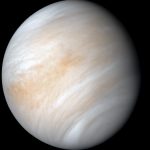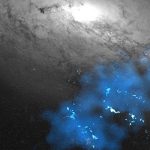The 7 rocky TRAPPIST-1 planets may be made of similar stuff
The red dwarf star TRAPPIST-1 is home to the largest group of roughly Earth-size planets ever found in a single stellar system.
Located about 40...
Astronomers measure enormous planet lurking far from its star
The gas giant takes 218 days to complete its orbit.
Scientists aren’t usually able to measure the size of gigantic planets, like Jupiter or Saturn,...
Scientists discover a hot super Earth near one of our galaxy’s oldest stars
A hot, rocky “super Earth,” near one of the oldest stars in the galaxy has taken a team of planet-hunting scientists by surprise.
The planet...
Mysterious x-rays may be first sign of ghost particles
Mysterious X-rays detected from nearby neutron stars may offer the first evidence of axions, hypothetical particles that could help unravel secrets about dark matter,...
6 things to know about NASA’s Mars helicopter on its way to Mars
When NASA’s Perseverance rover lands on Mars on Feb. 18, 2021, it will be carrying a small but mighty passenger: Ingenuity, the Mars Helicopter.
The...
Scientists discovers four exoplanets orbiting a nearby sun-like star
MIT researchers have discovered four new exoplanets orbiting a sun-like star just over 200 light-years from Earth.
Because of the diversity of these planets and...
How heavy is dark matter? it is tighter than previously thought
Scientists have calculated the mass range for dark matter - and it's tighter than the science world thought.
Their findings - due to be published...
Women’s menstrual cycles synchronize with moon cycles, study shows
In a new study, researchers used scientific methods to examine the connection between lunar and women's menstrual cycles.
They suggest that in ancient times, human...
Sign of life in Venus’ cloud? Maybe not
In September, a team led by astronomers in the United Kingdom announced that they had detected the chemical phosphine in the thick clouds of...
Tidal dwarf galaxy findings reveal how stars form
A lot is known about galaxies.
We know, for instance, that the stars within them are shaped from a blend of old star dust and...










